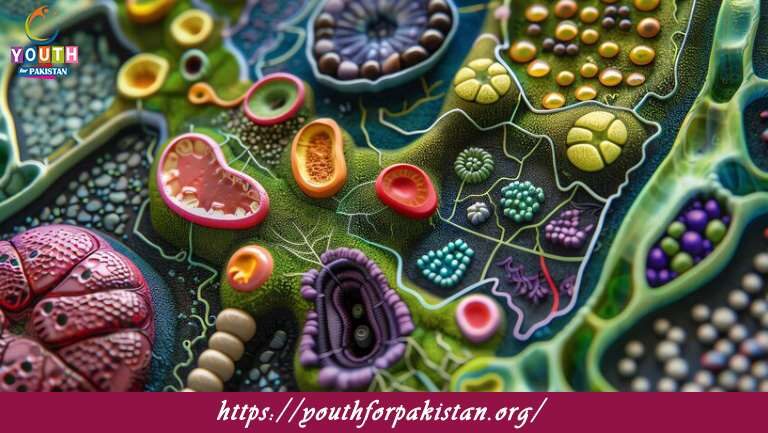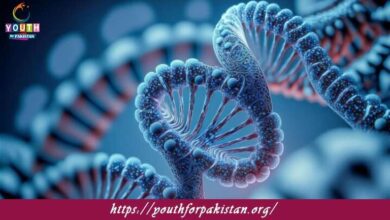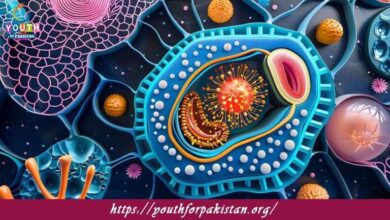11th Class Biology Chapter 5 MCQs with Answers

Test your understanding of biodiversity with Variety of Life MCQs focusing on classification, taxonomy, and evolutionary relationships. These questions help solidify Chapter 5 concepts and prepare you for quizzes and exams. Ideal for 11th Class Biology learners aiming to excel.
Which kingdom of life includes organisms that are multicellular, eukaryotic, and have cell walls made of chitin?
a) Animalia
b) Plantae
c) Fungi
d) Protista
The process of converting atmospheric nitrogen into a usable form for plants is known as:
a) Nitrification
b) Nitrogen fixation
c) Denitrification
d) Ammonification
Which of the following is an example of a prokaryotic organism?
a) Human
b) Yeast
c) Bacteria
d) Fern
The process of photosynthesis primarily occurs in which group of organisms?
a) Animals
b) Fungi
c) Plants
d) Protists
Which kingdom of life includes organisms that are primarily photosynthetic and have cell walls made of cellulose?
a) Animalia
b) Plantae
c) Fungi
d) Protista
The classification of organisms into different groups based on shared characteristics is called:
a) Genetics
b) Ecology
c) Taxonomy
d) Biotechnology
Which of the following is not a domain in the modern classification system of life?
a) Archaea
b) Bacteria
c) Eukarya
d) Prokarya
The process by which living organisms produce offspring of the same species is known as:
a) Reproduction
b) Growth
c) Respiration
d) Adaptation
Which domain of life includes organisms that are single-celled, prokaryotic, and often found in extreme environments?
a) Archaea
b) Bacteria
c) Eukarya
d) Protista
The study of the interactions between living organisms and their environment is known as:
a) Genetics
b) Ecology
c) Taxonomy
d) Biotechnology
Which of the following is an example of an autotrophic organism?
a) Human
b) Dog
c) Sunflower
d) Fungi
The basic unit of classification in the Linnaean system is:
a) Family
b) Order
c) Genus
d) Species
Which kingdom of life includes organisms that are multicellular, eukaryotic, and primarily heterotrophic?
a) Animalia
b) Plantae
c) Fungi
d) Protista
The process of breaking down complex organic matter into simpler substances is called:
a) Nitrification
b) Nitrogen fixation
c) Denitrification
d) Decomposition
The scientific name of an organism is usually composed of two parts, the:
a) Family and species
b) Genus and family
c) Genus and species
d) Order and class
Which domain of life includes organisms that are single-celled, prokaryotic, and widely distributed in various environments?
a) Archaea
b) Bacteria
c) Eukarya
d) Protista
The process by which living organisms take in oxygen and release carbon dioxide is known as:
a) Reproduction
b) Growth
c) Respiration
d) Adaptation
Which of the following is an example of a heterotrophic organism?
a) Oak tree
b) Rose bush
c) Lion
d) Algae
The classification system of life, in order of hierarchy, includes the following levels:
a) Kingdom, genus, species, family
b) Genus, species, order, kingdom
c) Family, class, order, phylum
d) Species, kingdom, class, family
Which kingdom of life includes a diverse group of eukaryotic organisms that do not fit into the other three kingdoms?
a) Animalia
b) Plantae
c) Fungi
d) Protista
The process by which plants and other autotrophic organisms convert light energy into chemical energy is known as:
a) Photosynthesis
b) Transpiration
c) Respiration
d) Decomposition
The branch of biology that deals with the study of genes and heredity is called:
a) Genetics
b) Ecology
c) Taxonomy
d) Biotechnology
Which of the following is not a characteristic of living organisms?
a) Cellular organization
b) Reproduction
c) Inorganic composition
d) Response to stimuli
The domain of life that includes humans, animals, plants, and fungi is:
a) Archaea
b) Bacteria
c) Eukarya
d) Protista
The process of converting ammonia into nitrate or nitrite is known as:
a) Nitrification
b) Nitrogen fixation
c) Denitrification
d) Ammonification
Which of the following is an example of a eukaryotic organism?
a) Bacteria
b) Algae
c) Virus
d) Archaea
The process of breaking down nitrate or nitrite into nitrogen gas is known as:
a) Nitrification
b) Nitrogen fixation
c) Denitrification
d) Decomposition
Which of the following is not a domain in the modern classification system of life?
a) Archaea
b) Bacteria
c) Eukarya
d) Prokarya
The process by which living organisms produce offspring of the same species is known as:
a) Reproduction
b) Growth
c) Respiration
d) Adaptation
Which domain of life includes organisms that are single-celled, prokaryotic, and often found in extreme environments?
a) Archaea
b) Bacteria
c) Eukarya
d) Protista
The study of the interactions between living organisms and their environment is known as:
a) Genetics
b) Ecology
c) Taxonomy
d) Biotechnology
Which of the following is an example of an autotrophic organism?
a) Human
b) Dog
c) Sunflower
d) Fungi
The basic unit of classification in the Linnaean system is:
a) Family
b) Order
c) Genus
d) Species
Which kingdom of life includes organisms that are multicellular, eukaryotic, and primarily heterotrophic?
a) Animalia
b) Plantae
c) Fungi
d) Protista
The process of breaking down complex organic matter into simpler substances is called:
a) Nitrification
b) Nitrogen fixation
c) Denitrification
d) Decomposition
The scientific name of an organism is usually composed of two parts, the:
a) Family and species
b) Genus and family
c) Genus and species
d) Order and class
Which domain of life includes organisms that are single-celled, prokaryotic, and widely distributed in various environments?
a) Archaea
b) Bacteria
c) Eukarya
d) Protista
The process by which living organisms take in oxygen and release carbon dioxide is known as:
a) Reproduction
b) Growth
c) Respiration
d) Adaptation
Which of the following is an example of a heterotrophic organism?
a) Oak tree
b) Rose bush
c) Lion
d) Algae
The classification system of life, in order of hierarchy, includes the following levels:
a) Kingdom, genus, species, family
b) Genus, species, order, kingdom
c) Family, class, order, phylum
d) Species, kingdom, class, family
Which kingdom of life includes a diverse group of eukaryotic organisms that do not fit into the other three kingdoms?
a) Animalia
b) Plantae
c) Fungi
d) Protista
The process by which plants and other autotrophic organisms convert light energy into chemical energy is known as:
a) Photosynthesis
b) Transpiration
c) Respiration
d) Decomposition
The branch of biology that deals with the study of genes and heredity is called:
a) Genetics
b) Ecology
c) Taxonomy
d) Biotechnology
Which of the following is not a characteristic of living organisms?
a) Cellular organization
b) Reproduction
c) Inorganic composition
d) Response to stimuli
The domain of life that includes humans, animals, plants, and fungi is:
a) Archaea
b) Bacteria
c) Eukarya
d) Protista
The process of converting ammonia into nitrate or nitrite is known as:
a) Nitrification
b) Nitrogen fixation
c) Denitrification
d) Ammonification
Which of the following is an example of a eukaryotic organism?
a) Bacteria
b) Algae
c) Virus
d) Archaea
The process of breaking down nitrate or nitrite into nitrogen gas is known as:
a) Nitrification
b) Nitrogen fixation
c) Denitrification
d) Decomposition
Which of the following is not a domain in the modern classification system of life?
a) Archaea
b) Bacteria
c) Eukarya
d) Prokarya
The process by which living organisms produce offspring of the same species is known as:
a) Reproduction
b) Growth
c) Respiration
d) Adaptation
Which domain of life includes organisms that are single-celled, prokaryotic, and often found in extreme environments?
a) Archaea
b) Bacteria
c) Eukarya
d) Protista
The study of the interactions between living organisms and their environment is known as:
a) Genetics
b) Ecology
c) Taxonomy
d) Biotechnology
Which of the following is an example of an autotrophic organism?
a) Human
b) Dog
c) Sunflower
d) Fungi
The basic unit of classification in the Linnaean system is:
a) Family
b) Order
c) Genus
d) Species
Which kingdom of life includes organisms that are multicellular, eukaryotic, and primarily heterotrophic?
a) Animalia
b) Plantae
c) Fungi
d) Protista
The process of breaking down complex organic matter into simpler substances is called:
a) Nitrification
b) Nitrogen fixation
c) Denitrification
d) Decomposition
The scientific name of an organism is usually composed of two parts, the:
a) Family and species
b) Genus and family
c) Genus and species
d) Order and class
Which domain of life includes organisms that are single-celled, prokaryotic, and widely distributed in various environments?
a) Archaea
b) Bacteria
c) Eukarya
d) Protista
The process by which living organisms take in oxygen and release carbon dioxide is known as:
a) Reproduction
b) Growth
c) Respiration
d) Adaptation
Which of the following is an example of a heterotrophic organism?
a) Oak tree
b) Rose bush
c) Lion
d) Algae
If you are interested to enhance your knowledge regarding Physics, Chemistry, Biology, and Computer please click on the link of each category, you will be redirected to dedicated website for each category.





